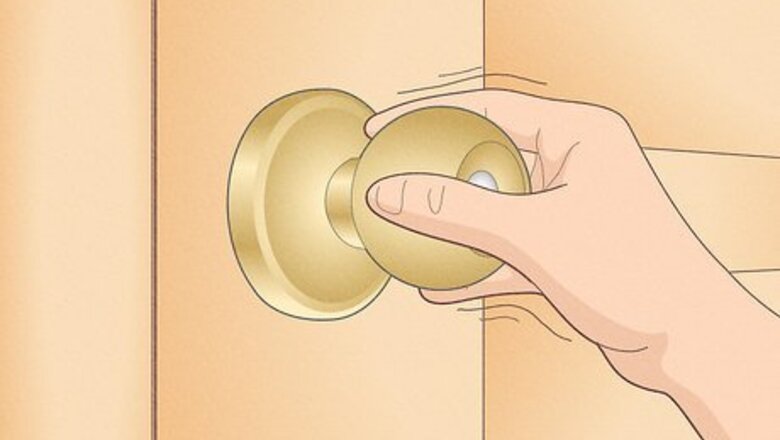
views
Burglar-Proofing Your Home
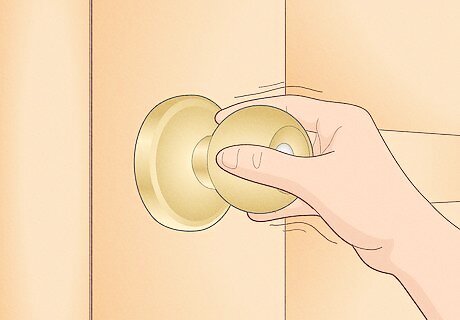
Replace weak locks. Locks are the weakest point on a door. Make sure you have a grade 1 or grade 2 dead-bolt lock that penetrates the door frame. The strike plate—the stationary piece that the bolt enters—should be made of solid metal or brass, with six three-inch-long screws that penetrate the door jamb and the door frame. For locks near windows, use a double cylinder deadbolt, which requires a key on the inside and outside. This prevents thieves from breaking the glass, reaching in and unlocking the door.
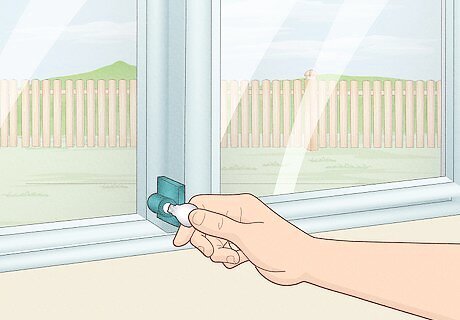
Secure your windows. Windows are another common entry point, particularly in the summer, when they are often left open. Put locks on your windows. Key locks work best. Otherwise, criminals can simply break the glass and turn the lock. If you do wish to leave your windows open for ventilation, install a window stop that prevents the window from opening more than 6-8 inches. Use safety or shatterproof glass, to make breaking the windows more difficult. For added security, consider putting bars or accordion gates on windows at street level or on fire escapes. Install a metal grate to protect basement windows, or put a metal bar in the middle to make sure they are too small to crawl through. Secure window air conditioning units. Use a bracket or sliding window lock to prevent thieves from simply pushing in the unit and entering.

Make your windows hard to reach. No matter how secure you make them, windows are still made of glass. The best way to prevent entry by windows is to keep the thief from getting to the windows in the first place. Don’t leave ladders out unsecured. Thieves can use them to reach second story windows. Consider installing plastic drainpipes, which are much harder to climb than metal ones. Cut back weight-bearing tree limbs that hang near windows or over the roof. Place prickly bushes around first story windows to make them less tempting targets.
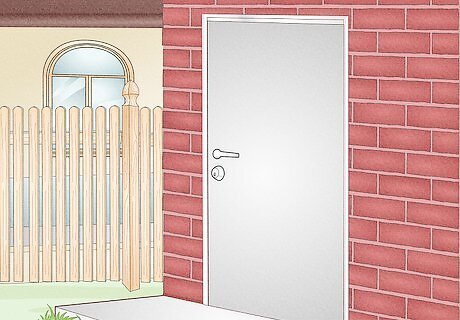
Make sure your doors are strong. The back door is the most common point of entry for thieves, and the most common method is to simply kick it in. Outside doors should be metal or solid hardwood and at least 1.75 inches thick. Be sure the frames are of equally strong material, and the door fits its frame securely so it cannot be pried open. Make sure the hinges are on the inside. Inexperienced door installers sometimes leave them on the outside, making it easy to simply remove the door. If there is a window near the door, put a ¼ inch covering of clear Plexiglas over the existing glass to prevent thieves from breaking the glass and reaching in to open the door. If you have an automatic opening garage door, make sure it can’t be lifted open when closed.
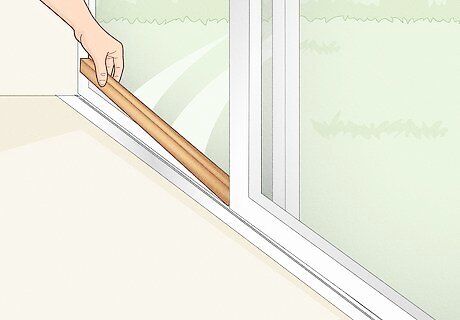
Take extra precautions with sliding glass doors. These are often a point of entry for burglars, as the latch that closes them is easily forced. Place a wood dowel cut to size or an adjustable safety bar in the interior floor track to keep the door from opening. Be sure to use shatterproof glass. If your glass is not, cover it with a thin film of plexiglass to prevent shattering.

Eliminate hiding spots. Trim bushes and trees, particularly around doors and windows. Also, consider replacing privacy fences or thick shrubbery with something that can be seen through. A tall, solid fence also provides privacy for the burglar kicking in your back door.
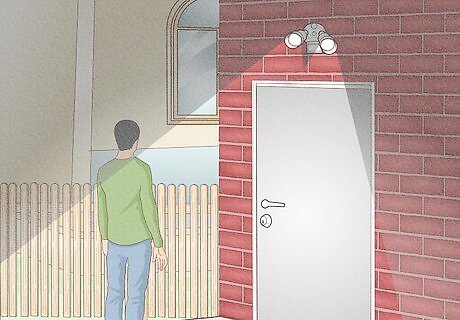
Install outdoor lighting. Motion sensitive lights are best. They startle criminals, and they also draw your attention and that of your neighbors. However, since nearly two thirds of burglaries occur during the day, lights should not be a top priority. Secure your windows and doors first.

Get a police inspection. You can make an appointment for local police to inspect your home and suggest security fixes. This is a good way to decide what you should prioritize in protecting your home.

Know that insurance companies provide discounts for improving home safety. Most insurance companies provide 2 percent to 15 percent discounts for devices that make a home safer—dead-bolt locks, window grates, bars and smoke/fire/burglar alarms.
Protecting Your Home When You're Away

Make it look like you’re still home. The key to protecting your home when you’re away on work or vacation is to trick burglars into thinking you are still there. Follow the steps below to do so. EXPERT TIP Saul Jaeger, MS Saul Jaeger, MS Police Captain, Mountain View Police Department Saul Jaeger is a Police Officer and Captain of the Mountain View, California Police Department (MVPD). Saul has over 17 years of experience as a patrol officer, field training officer, traffic officer, detective, hostage negotiator, and as the traffic unit’s sergeant and Public Information Officer for the MVPD. At the MVPD, in addition to commanding the Field Operations Division, Saul has also led the Communications Center (dispatch) and the Crisis Negotiation Team. He earned an MS in Emergency Services Management from the California State University, Long Beach in 2008 and a BS in Administration of Justice from the University of Phoenix in 2006. He also earned a Corporate Innovation LEAD Certificate from the Stanford University Graduate School of Business in 2018. Saul Jaeger, MS Saul Jaeger, MS Police Captain, Mountain View Police Department Expert Trick: Leave your car in the driveway when you're not home, instead of the garage. That way, it will look like you're still home. However, be sure to take any valuables out of your car, since that does increase the risk it will be broken into.

Install timers on lights and televisions. Timers cost $5 to $40. They can turn on and off your lights, or better yet your lights and television, at set times each morning and evening. Most burglars avoid occupied homes. If they think you are around, they’ll look elsewhere.
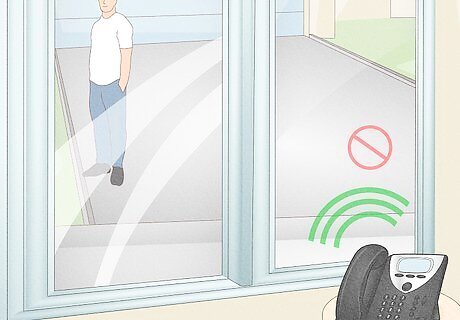
Don’t let criminals hear your phone. Burglars sometimes call homes to be certain no one is there. If they hear a phone go unanswered or an answering machine, they will know you are gone. Either turn down the volume on your ringer and answering machine or, better yet, have your calls forwarded.
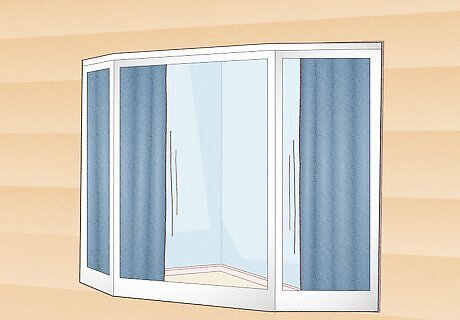
Leave blinds and drapes in their usual position. If you open and close them each day, consider using a timed, automatic curtain opener. If you are leaving your drapes open, be sure to move valuables so they are not in sight from the window.
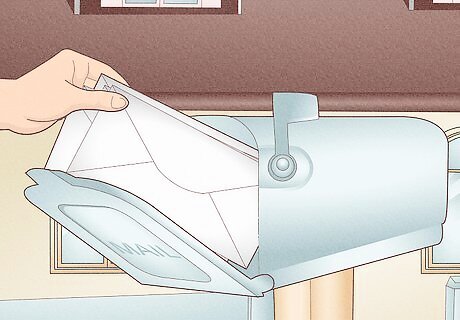
Take care of your mail and packages. If your newspapers and mail start to pile up, criminals will know you’re not around. It is best to have a neighbor pick up your mail, packages, and newspaper for you. Seeing deliveries will make criminals think someone is home. You can also have your mail forward or held by the post office.
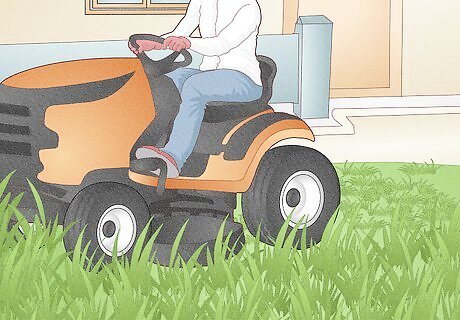
Take care of your lawn and sidewalk. Arrange to have your lawn mowed in the summer, and your walk and driveway shoveled in the winter.

Take out the trash. Have a neighbor use your trashcan and put it out on the curb. A house with no trash cans in front on collection day signals burglars that you aren’t home.

Tell your neighbors. Tell a dependable neighbor or two when you plan to be away, and ask them to keep an eye on your house.
Installing Alarms
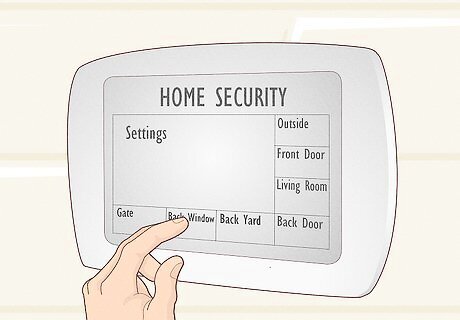
Choose the system that is right for you. Alarm systems range from extremely complex and expensive for those that provide offsite monitoring and mobile access, to relatively cheap for door and window alarms you can install yourself. While more features might make your home marginally safer, know that merely having any sort of alarm system is usually enough to deter burglars. A monitored system will notify an offsite center if a break-in is detected. They will notify the police if they cannot contact you, or if they do contact you and you ask them to do so. A simple security system will set off a shrill alarm if a break-in is detected. This might scare off the burglar, or lead neighbors to call the police. However, know that police often charge a fee for a false alarm. Individual alarms for doors or windows or wireless cameras are relatively inexpensive and easy to install.
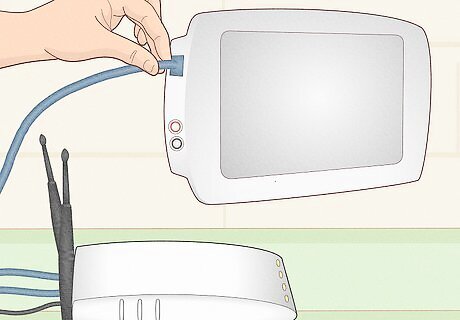
Consider your options if choosing a monitoring service. There are a variety of choices to make when choosing a monitored service. Landline, Cellular, or Broadband Monitoring – Each option for how your system communicates with the monitoring center has advantages and disadvantages. Landline – A landline phone connection is used to communicate with the monitoring center. It is the slowest option, and if you choose it, you should get cell uplink backup, or cutting the telephone lines will disable your system. Cellular – A cellular uplink is used to communicate with the monitoring center. Cellular monitoring is faster and more reliable, but also more expensive. Broadband – Your broadband internet is used to communicate with the monitoring center. It is much faster than a landline, and while not as reliable as cellular, it is cheaper. Professional or DIY Installation – DIY is usually quite simple, and it means you own the equipment. It is good for renters or people who move a lot. The professional installation allows for more complex systems, but if you will be moving soon, be sure you go with a company that will move your system for free. Home Automation – This provides the ability to remotely control not only your security settings, but also things like turning the lights on and off, and thermostat settings. It can also give you real-time updates and let you know when your kids come home. It is convenient, but more expensive.
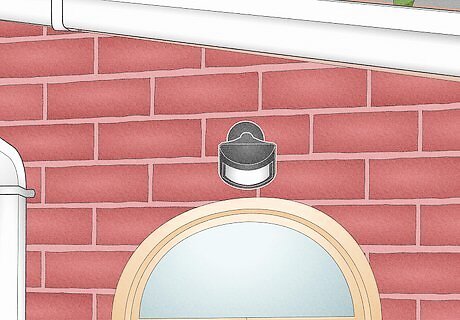
Choose a home security system that uses motion detectors and arms all doors and windows. These are the basics, whether using a monitoring service or not. There are many other features you can get – pressure mats under rugs to detect footsteps, closed-circuit TV systems, broken glass sensors, or pressure sensors that detect when someone is trying to kick in a door – but motion detectors and magnetic door and window contacts are usually sufficient to detect a break in.
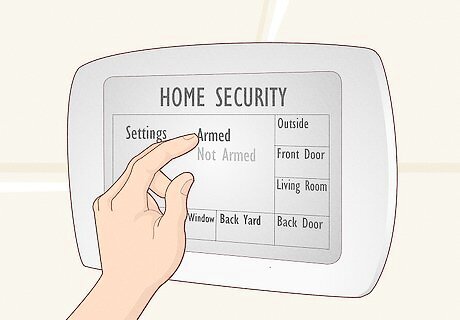
Get the most out of your system. Your security system won’t help if you forget to turn it on. It will be less effective if you don’t let burglars know it is there. Always follow these best practices: Always use your system, even when you take a quick trip to the store, visit neighbors, or walk the dog around the block. Never post your passcode near the home security alarm keypad. Make sure the yard signs and window decals that say your home is protected by a security system are clearly visible. Use generic security signs. Knowing the security company can help thieves to disable the system.
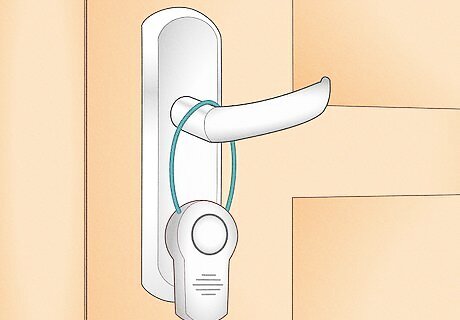
Install your own simple security devices. If you don’t want to invest in a full home security system, there are a number of simple, inexpensive alarms you can install yourself. Doors – Doorknob alarms sound off loudly when they are moved. If someone tries to break in, they will emit a piercing sound just like an alarm system. Windows – Similar movement-triggered alarms are available for windows. In addition, you can purchase inexpensive alarms that trigger when a window is broken. If you want to leave windows cracked for ventilation, window swags will sound if the window is opened too wide. Webcams – Motion-sensitive webcams start at $100 and can be remotely monitored on a Smartphone or computer. Twenty-four hour surveillance can help dissuade criminals from entering your home, and catch them if they do.

Fake it even if you don’t have an alarm. Studies show that most criminals move on as soon as they see an alarm sign. So even if you don’t want to pay for an alarm system, be sure to invest in alarm signs. Put signs in the front and rear of your house, as well as stickers in any windows you are worried about. Adding fake motion sensors on your windows will make it even less likely that a burglar chooses your house.
Making Your Home Less of a Target

Get to know your neighbors. The nosy neighbor across the street is your best friend when it comes to protecting your home. Criminals usually case a neighborhood before committing a crime, so they will know when you leave for work. Watchful neighbors who are home while you are at work make you much less likely to be robbed.

Get a dog. A dog is a big responsibility, but they are very effective at deterring burglars. You want to keep burglars out, so bark matters more than bite. A small yappy dog is a more effective deterrent than a large quiet one.

Always lock your doors and windows. Don’t make it easy on thieves. An open door or window – even if it’s only while you are walking the dog – makes your home an easy target. Get in the habit of locking every door and window when leaving, after entering and before bedtime. And don’t forget to secure your dog or cat door.
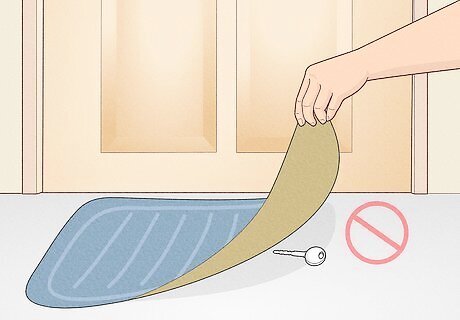
Keep your keys safe. The only thing worse than leaving your door unlocked is letting a criminal have the keys. Don’t keep a hidden key outside your house. Thieves know the most likely hiding places, so whether it is under a mat, in a flowerpot, or hidden in a fake rock, they will probably find it. Instead, give a spare key to your neighbor. Don’t carry house keys on a key ring bearing your home address or leave house keys with your car in a commercial parking lot or with an attendant.
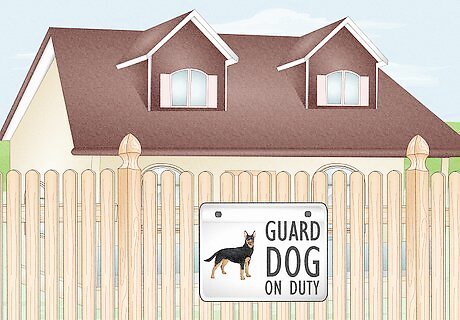
Post foreboding signs. Even if you don’t really have security or a dog, a sign can be an effective deterrent.

Don’t show off expensive stuff. Criminals case neighborhoods. If they can see valuables – or even if you just look much richer than your neighbors – they are more likely to target you. Draw blinds and shut curtains to keep items out of view and prevent criminals from “window shopping.” If you have a fancy car, keep it in the garage. Don’t advertise new purchases by leaving boxes on the curb. Put them in your recycling bin. Or break the boxes down and fold them inside out, then put them out just before the pickup time.

Be careful when having workers in your home. Plumbing or home improvement projects give workers ample time to case your home; information they might pass on to criminals. Be sure to ask potential contractors if their employees are subject to criminal background checks.
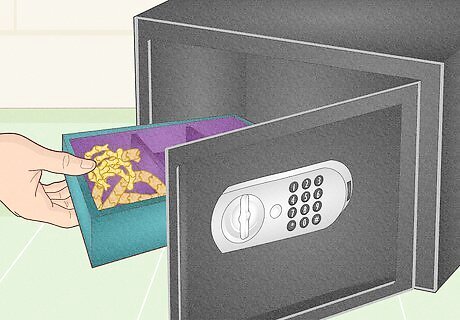
Make your valuables hard to access. Criminals want to get in and out of homes as quickly as possible. Make it difficult on them by hiding or securing valuables. Consider buying a small safe that bolts to the floor. Rent a safe-deposit box for extra-valuable items. Keep car keys and garage remotes hidden. Stash jewelry or cash in places where thieves are unlikely to look: Use old, cleaned out shampoo, conditioner or moisturizer bottles. Use an old spice jar. Paint the inside with glue and add herbs so it looks full. Then put cash in a plastic bag, insert in the jar and keep with your other spices. Hide valuables in a full feminine napkin or tampon box. Make a slit in a tennis ball, squeeze to open, and hide valuables inside.
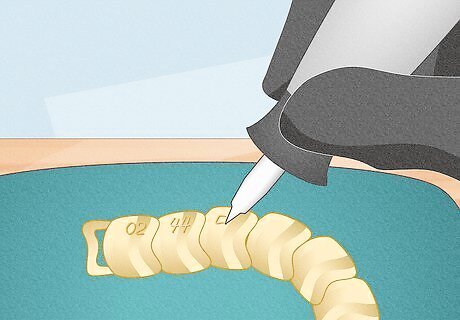
Engrave and register valuables. If they are stolen, this will make it much more likely that you can recover them. Engrave jewelry with your name or a number and take a photo of it. This will make it more difficult to sell and aid in catching the thief. Make sure you record the serial numbers for your smart phones, computers, televisions, and other expensive electronics, as this will make them easier to track. Register your bicycle by serial number in the National Bicycle Registry.




















Comments
0 comment